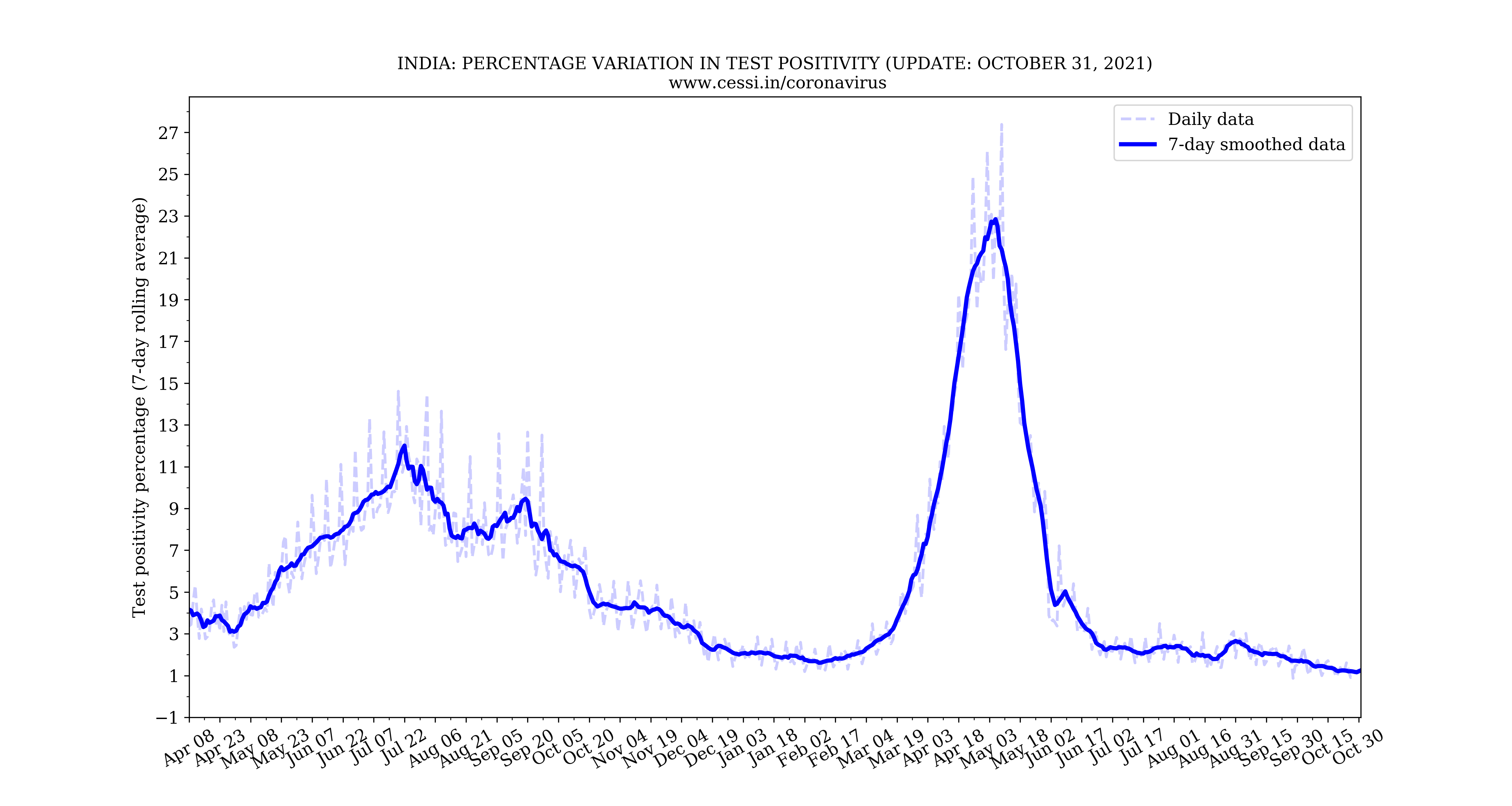Data Analytics
Daily New COVID-19 Cases in India
The above chart shows the the number of new cases being confirmed, new deaths and new recoveries all over India, each day.
Statewise COVID-19 Deaths in India
The above chart shows the statewise distribution of deaths due to COVID-19 in India.
The above plot compares the number of deaths in West Bengal with four other states in India.
The above plot compares the the number of confirmed cases of COVID-19 per million in 10 urban districts of India. It can be seen that in Bengaluru and Trivandrum, the number of cases per million is significantly lower than in the other areas (as of 5th May 2020).
Relationship between Total Testing and Positive Test Numbers
The above plot shows the variation of number of tests done versus resulting positive outcomes for COVID19 in India. The curve indicates that the rate of increase in positive outcomes is higher than the rate of increase in the number of tests in recent times. This possibly implies that the disease is growing rapidly or that the tests are being limited more to people who are likely to have the disease. This also suggests that we might be under sampling and not testing enough.
Progression of test positivity percentage
How the test positivity percentage is calculated: 100*daily confirmed/daily tested.
The assumption in this plot is that the results become immediately available on a daily basis following tests,
which may not be true.
However, the long term trends would not be affected by the validity of this assumption.
Percentage Growth Rate of Confirmed Cases and Deaths
The plot above shows the growth rate of deaths and confirmed cases from March 1st, 2020.
Growth rate of confirmed cases has been calculated as the ratio of the number of new cases on a day to the total number of cases on that day. Growth rate of deaths has been calculated as the ratio of the number of new deaths on a day to the total number of deaths on that day. It can be seen that all three growth rates are stabilizing after the lockdown.
The plot above shows the variation of the case fatality rate of COVID-19 with time in India. The case fatality rate is defined as the ratio of the number of total deaths on a day to the number of total cases on that day. A very high case fatality rate would mean that either the disease has become deadlier, or the healthcare system is failing, or both.
Doubling Time and Reproduction Number in India
Doubling time is defined as the number of days required for the number of active cases to double. The plot above shows how the doubling time is changing with time in India (after the first 10 cases). The number of active cases is what remains when the number of deceased people and the number of recovered people are taken away from the number of confirmed cases. A higher doubling is desirable since this would mean that the spread of the disease is slowing down. It is apparent from the plot that the doubling time has been increasing since the lockdown was implemented.
Here, we plot the Reproduction number versus time. Reproduction number R is the number of people infected by a single infected person. A Reproduction number below 1 is desirable to slow the spread of the virus. We estimate this by:
Let X(t) be the number of active infections at time (t), where t is a particular day. Then, the number of people infected by X(t) is given by R(t)X(t). For example, if R(t) = 1, then X(t) will infect another X(t). Assuming that it takes 7 days for symptoms to manifest,
R(t) = X(t+7)/X(t). This can equivalently be described by R(t) = X(t)/X(t-7). This is plotted in blue.
World Data
Distribution of Cases by Country
The plot below compares the number of confirmed cases in India to the number of confirmed cases in other countries. Although it looks like the rate of increase is decreasing with time, this is an effect of the graph being plotted in log scale.
The plot below show the distribution of total deaths globally by country and continent.
The plot below shows the worldwide distribution of cases in a map view. The time series for individual countries can be obtained by clicking on said country in the map.
